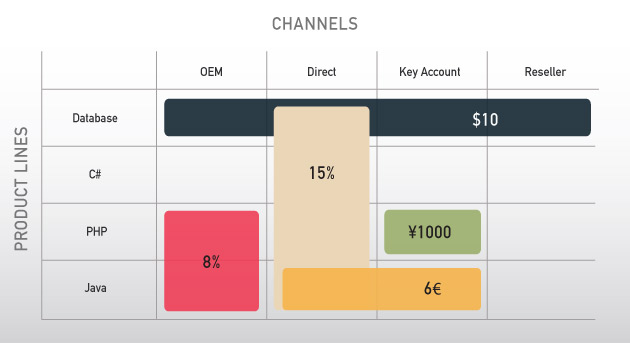When selling digital products, there are numerous scenarios where you either want to — or need to — offer discounts. The siren song of setting up a one-off discount is rarely a long-term strategy for sanity. But with a small amount of planning, you can transform your needs for one-off discounts into tools that help you long after the first customer is gone.
The typical shortcut for managing one-off discounts is to copy an existing SKU and set a different, discounted price for a specific customer, campaign or reseller. The short-term result is usually a success because the current need is addressed, but this short-term success is a Pyrrhic victory.
As these scenarios re-occur, the product catalog grows in size requiring a complex interface to manage and differentiate these SKUs. Even worse, in the short term, the accounting department usually comes calling to inquire how to account for the revenue associated with this unfamiliar and potentially rarely used SKU. Although a good ecommerce platform should be able to solve both of these problems, it’s always best to have an action plan in advance.
The graphic below illustrates the complexity of issuing one-off discounts. The rows are different product lines, the columns are different channels. As shown in the graphic, discounts are either fixed or variable amounts that add an additional layer to this problem.

Let’s look at five scenarios where one-off discounts are used, and investigate some better ways to manage this issue:
- What’s the best way to discount a product that is part of a promotional email campaign? When working with individual promotions for a single campaign such as email or channel campaigns, use an individual discount code that applies only to the specific product. That way, you can get an accurate count of sales for the campaign and total revenue attributed to the product.
- Say you have a repeat customer who buys additional software licenses when adding seats. How do you discount this product? Avoid the trap of adding unnecessary SKUs by creating a “key account” for the company that has an assigned discount.
- Resellers want to buy licenses for customers using their discounted price. Setting up specific SKUs or discount codes for resellers works in the short term. However, if you take the extra time to set a specified discount and designated product list for each reseller, you can more effectively track your sales and gather valuable data. Then you will know which product is the most successful, which reseller is the most valuable and you can track future sales to decide when the time is right to increase resellers’ discounts, etc.
- Similar to customers who request partial discounts after the fact, unsatisfied customers also provide opportunities to utilize one-off discounts. The best way to handle this scenario is to have a well-armed customer service organization that can offer discounts, either as a flat-rate amount or as a percentage of the sales price. This tactic offers the most flexibility to flip the customer to satisfied, and uses discount codes across the horizontal spectrum of products.
- If you need to offer a free copy to a multiplier (someone who can bring additional sales) utilize a dynamic product price link that expires after one use. This tactic allows you to have a record of who received the product for future marketing or accounting reasons.
Keystone
Although it may be easier to simply create a new SKU when discounting a product, you are creating additional hurdles to overcome later. Using better ways to apply one-off discounts may take a few extra steps, but in the long run it keeps your product catalog manageable, simplifies accounting and provides clean, aggregated data.